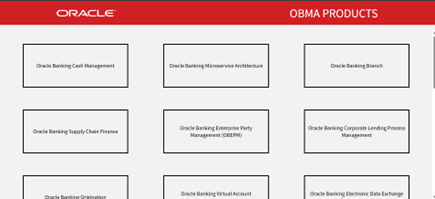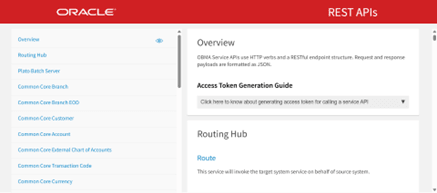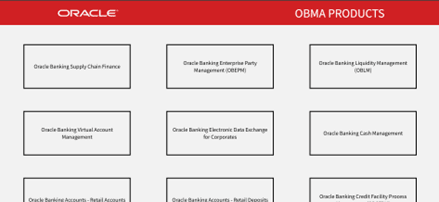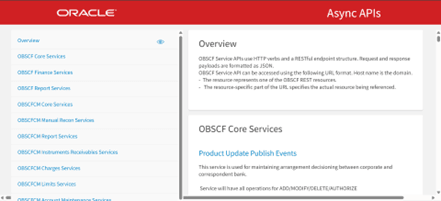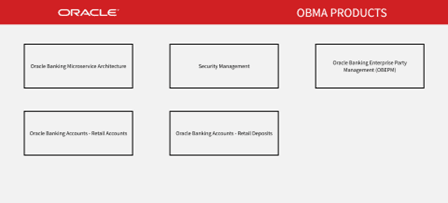15 API-Hub Swagger Documentation
This topic describes about the API-Hub Swagger Documentation.
API-hub is a centralized API documentation platform that aggregates and organizes service APIs across all product domains. It serves as a single point of reference for developers to access Swagger-based REST APIs, asynchronous APIs, and domain wise Data dictionary. Deploy the plato-api-hub.war file in the weblogic. To deploy application, refer to Deploy Application section in Configuration and Deployment Guide. Once deployed, the web application is accessible via the context root: plato-api-hub. Visiting the web application URL leads to the Home Page, which presents three primary documentation categories:
- Swagger API
This section provides comprehensive Swagger documentation for all RESTful APIs, organized hierarchically:
Product-wise Categorization: APIs are grouped under their respective product names.
Subdomain Classification: Within each product, APIs are further divided based on service subdomains for easy navigation and clarity.
Swagger UI: Each API is documented using Swagger UI, offering interactive exploration, endpoint descriptions, and request/response models.
- Async API
This section focuses on asynchronous communication APIs such as:
Message-based APIs: Includes APIs using Kafka.
Event Specifications: Each async API is described with event structure, headers, payload formats etc.
- Data Dictionary
The Data Dictionary section provides a PDF document containing database schema references:
Table Listings: Includes all relevant database tables used by the services.
Column Metadata: For each table, the document lists column names, data types, descriptions, and constraints.
Key Definitions: Clearly identifies primary keys, foreign keys, and relationships.

